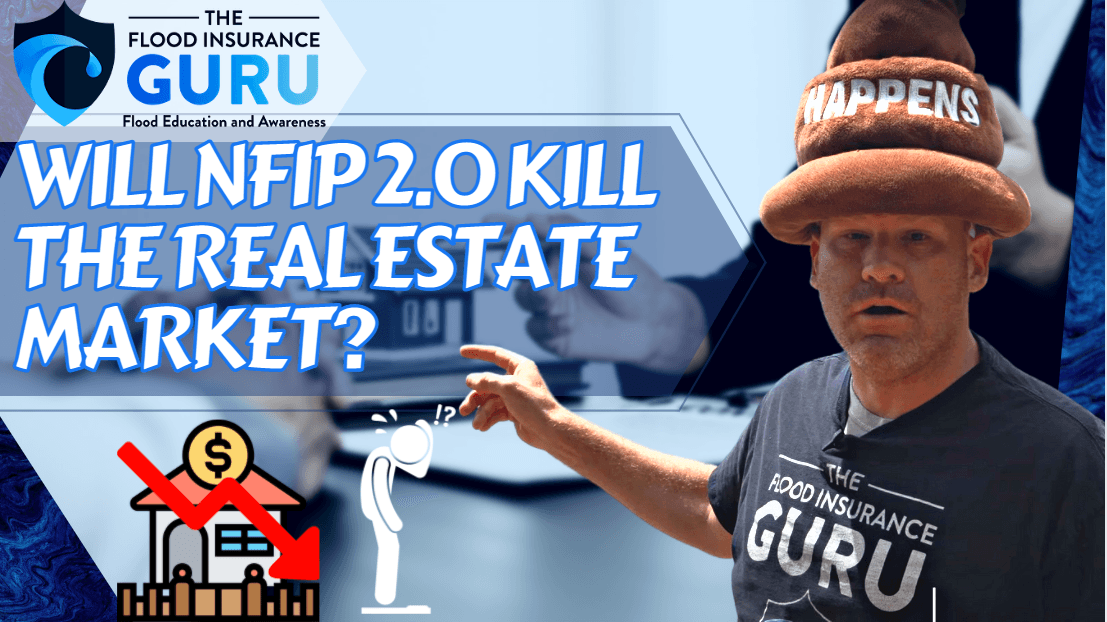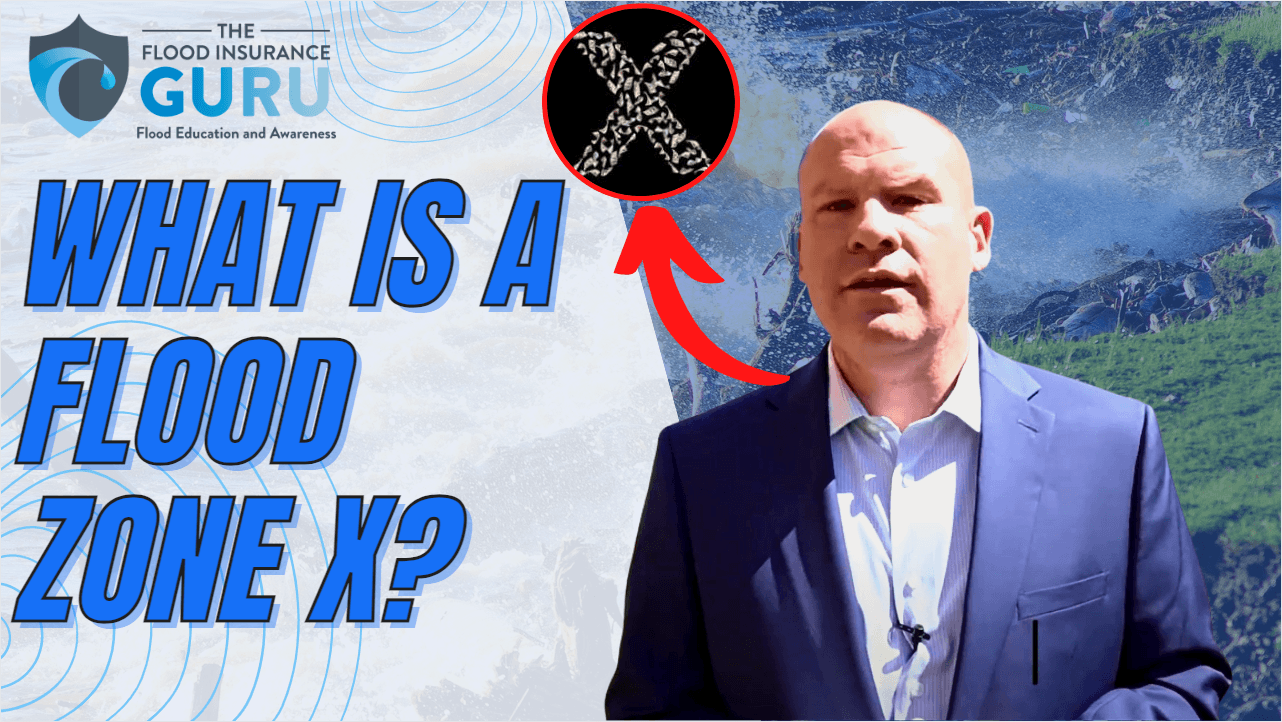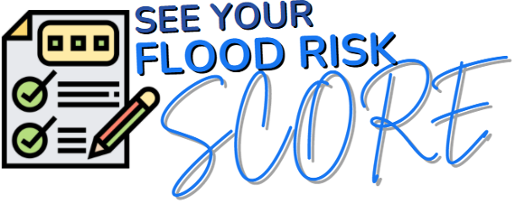Will the NFIP Risk Rating 2.0 Kill the Real Estate Market?
September 16th, 2021
4 min read
By Chris Greene

We're less than a month away from the first phase of the flood insurance changes coming to the Federal Emergency Management Agency (FEMA) and the National Flood Insurance Program (NFIP) through the new Risk Rating 2.0 program.

October 1st marks the first massive change coming to federal flood insurance for homeowners across the United States in thirty years, and this also means that a lot of people will be affected outside of the flood industry.
Will the NFIP Risk Rating 2.0 program kill the real estate industry?
Understanding NFIP 2.0
The new program from the National Flood Insurance Program (NFIP) is sure to change the flow in the flood insurance industry overall as this will have a lot of changes that focus on individual flood risks. We've talked about this in our NFIP 2.0 Series per State and Counties, but we'd like to review it to further contextualize its impact on real estate.

The biggest change coming to federal flood insurance is the scoring that comes into the flood risks per property. Simply put this "flood risk score" will take into multiple variables that accurately represent the flood risk of a property — regardless of it being residential or commercial property. This score will be based on some features that are staying and new features.
The remaining features are as follows:
- Zone designation in the flood maps (e.g. special flood hazard areas (SFHA) or preferred flood zones) however flood insurance rate maps will only be used from a regulatory standpoint, not rating.
- Distance to a body of water such as a river, lake, or even the coastline
- Prior flood insurance claims or flood claims made with the property
- Policy assumption and grandfather rule
The new things that will come with the Risk Rating 2.0 are as follows:
- Types of flooding that your property experience. This can be either pluvial or the accumulated water due to rain, runoff; fluvial or river floods; or coastal which are due to storm surge or coastal erosion. Sometimes even a combination of these three.
- First-floor height and elevation of the structure. A new feature that determines your flood risk score is the distance between the ground (grade) from your first floor or the first habitable floor of your property.
- Flood Risk Mitigation Measures made on the property. Is the lowest floor above the base flood elevation? Are there enough flood openings to let floodwaters through?
So how will this impact the real estate industry and will Risk Rating 2.0 be able to completely kill off sales for real estate agents?
The Real Estate Impacts
As you would notice, we immediately mentioned that flood insurance will no longer be rated based on the flood zone. Simply put, this will only determine whether or not a property will be required to process a mandatory flood insurance purchase based on its flood zone.
For everyone's information, if you're in a high-risk area like flood zone A, flood zone AE, or flood zone V, your mortgage will be sure to require you to get flood insurance.

This is due to the regulation set by FEMA and the NFIP for every property. Mortgage-wise this is to best protect their assets which is the structure of the building itself and ensure that reselling it will be a smooth breeze.
Flood Zone for All
At the current program, flood zones directly impact your flood insurance premiums as well. People who are in the high-risk flood zones get significantly higher rates than low-risk zones (like Flood Zone X). This also means that if you're paying for $1000 flood insurance, that's an additional $30,000 on a 30-year mortgage.

Most of the time, you can hear from agents or mortgage lenders that you're not in a flood zone when you're just in a low-risk flood zone. They really don't mention this until an escrow because low-risk zones aren't required to get flood insurance. High-risk areas, on the other hand, will immediately get notified about their mandatory flood insurance requirement by the mortgage company.
It's factual that both of these properties can get flooded equally given the right circumstances like Hurricane Katrina and Hurricane Ida recently.
With the Risk Rating 2.0, this "not in a flood zone" misconception in flood insurance from property owners, agents, and lenders alike will be eliminated since each property will have its individual risk of flooding. Basically, all properties will experience flood one way or the other regardless of the flood zone.
This type of change is the first blow to the real estate market since it might discourage a lot of property owners to buy a property. It comes down to the question "will I be able to resell my house?" when all properties have flood risks.
Mortgage and Flood Insurance Policies
When it comes to sales of properties, one of the biggest concerns for buyers is affordability especially when you put in that mortgage, homeowner's insurance, and flood insurance. With the Risk Rating 2.0, the goal is to make more people be aware of their actual risk and convince them to secure flood policies for their homes.
When you take a mortgage out on a home, you'll have a secret escrow in form of these insurance policies. This means that moving into a new property will also get you a possibly more expensive loan and payment each month since you will get a more accurate representation of the flood coverage due to your risks.

It's important to remember that when you have a flood insurance policy in place, it will be a separate payment from the homeowner's insurance or the mortgage loan per month. The thing is, you can't really escape floods as we've seen with Hurricane Ida in New York, so getting flood insurance is a must to protect your personal property or contents as well as your entire home.
This might cause an effect where people will rather do measures to better protect their own house instead of buying a new one. The chance of people having cheaper homes to get more security when it comes to floods might also go up.
Best Steps Forward
The real estate won't absolutely be killed off by the new Risk Rating 2.0 program since a lot of people will still buy or sell houses. However, it's more likely that the industry will either have to strategize with this new program or get massively hurt by it.
At the end of the day, this new program isn't just for the sake of creating more problems other than the threat of being in a flood plain or waters rushing to inundate your property. This is equity in action for a reason since flood insurance is somewhat getting ignored to the point that it becomes detrimental to one's investments and homes.
We've seen how Hurricane Ida showed that flood zones aren't really the safeguard from flooding since water will never know where and when to stop. New York saw a lot of homeowners clueless on the steps forward to recover from the damages.
The best thing to do is to really think hard about selling or buying a house since it will also include flood insurance one way or the other. Regardless of flood zones, every home will get to see their flood risks and the scores won't be zero.
If you have questions on how to best approach real estate with the Risk Rating 2.0, how to get flood insurance, and how to see your flood risk scores even before the new program kicks in, click below to reach us.
Remember, we have an educational background in flood mitigation which lets us help you understand your flood insurance, your flood insurance, and mitigating your property long-term.



